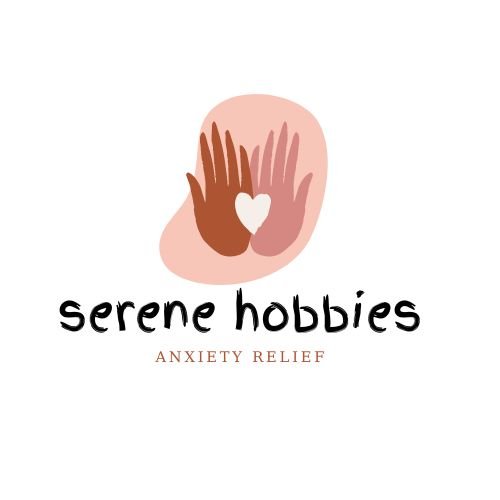To overcome workplace anxiety, try expressive writing techniques. Writing helps you articulate your worries, providing clarity and emotional release. You can start journaling daily to explore your feelings and identify stress triggers. Creative writing or letter writing can also foster self-reflection and improve mood. Make your journaling space comfortable and inspiring to encourage regular practice. Utilize prompts that focus on achievements and challenges to build self-esteem and resilience. By incorporating mindfulness into your writing, you'll enhance emotional regulation. Discover how these techniques can transform your work experience and lead to greater insight and confidence.
Understanding Workplace Anxiety

Workplace anxiety affects many employees, often leading to decreased productivity and overall job satisfaction. You might find yourself feeling overwhelmed by deadlines, fearing judgment from colleagues, or struggling with the pressure to perform. These feelings can manifest physically—perhaps through tension headaches or a racing heartbeat—making it even harder to focus on tasks at hand.
Understanding the root causes of your anxiety is essential. It could stem from unrealistic expectations, poor communication within your team, or a lack of control over your workload. Recognizing these triggers can empower you to address them effectively. You might experience this anxiety during meetings or while handling customer interactions, where the stakes feel high.
It's important to note that you're not alone; many employees experience similar feelings. Acknowledging your anxiety is the first step toward managing it. Instead of burying these feelings, consider how they affect your daily routine and overall well-being.
Benefits of Expressive Writing
Expressive writing offers you a powerful way to release pent-up emotions and gain clarity about your feelings.
By putting your thoughts on paper, you enhance your self-reflection skills, allowing for deeper insight into your workplace experiences.
This practice not only calms anxiety but also fosters personal growth.
Emotional Release and Clarity
How can putting pen to paper lead to a sense of relief and clarity in your daily routine? When you express your thoughts and feelings through writing, you create an outlet for emotions that might otherwise overwhelm you. This act of emotional release can appreciably alleviate anxiety, giving you a chance to step back and process what's bothering you.
Writing allows you to articulate your worries, fears, and frustrations, transforming chaotic thoughts into coherent words. By doing so, you can gain a clearer perspective on your challenges. Instead of feeling trapped in a whirlwind of emotions, you'll discover patterns and insights that help you understand your situation better.
Moreover, expressive writing can enhance your mood and lower stress levels. As you let your feelings flow onto the page, you might find that you're not just releasing tension, but also fostering a sense of control over your mental state.
This clarity helps you approach your work with renewed focus and confidence, making it easier to tackle tasks that once seemed intimidating. So, grab that notebook and start writing—your mind will thank you for it.
Enhanced Self-Reflection Skills
One powerful benefit of writing regularly is the enhancement of your self-reflection skills. When you put your thoughts down on paper, you create a safe space to explore your feelings, motivations, and behaviors. This process helps you gain insight into your experiences, allowing you to identify patterns and clarify what truly matters to you.
As you engage in expressive writing, you'll find that it encourages deeper thinking. You're more likely to ask yourself important questions, leading to personal growth and improved decision-making. Here's a simple table to illustrate the key aspects of enhanced self-reflection:
| Aspect | Benefits | Outcome |
|---|---|---|
| Emotional Insight | Understand your feelings | Greater emotional awareness |
| Behavior Analysis | Identify triggers | Improved coping strategies |
| Goal Setting | Clarify aspirations | More focused actions |
Types of Expressive Writing

When it comes to expressive writing, several techniques can help you manage workplace anxiety.
Journaling can provide clarity, while creative writing exercises spark your imagination and relieve stress.
Additionally, letter writing practice allows you to articulate your feelings and thoughts, making it a valuable tool for self-expression.
Journaling for Clarity
Journaling can be a powerful tool for gaining clarity in the face of workplace anxiety. By putting your thoughts on paper, you create a space to explore your feelings and identify the sources of your stress. This practice helps you process emotions, making it easier to understand what's truly bothering you.
To structure your journaling, consider categorizing your entries. Here's a simple table to guide you:
| Date | Feelings | Insights |
|---|---|---|
| 2023-10-01 | Overwhelmed | I have too many deadlines. |
| 2023-10-02 | Frustrated | I need clearer communication. |
| 2023-10-03 | Anxious | I fear failing in my role. |
Each column serves a purpose: the date marks your progress, feelings capture your emotional state, and insights offer clarity on your situation. Regularly reviewing your entries can reveal patterns, helping you pinpoint recurring issues. As you gain insight, you'll feel more equipped to manage your anxiety, fostering a greater sense of control in your professional life. Journaling isn't just writing; it's a path to understanding.
Creative Writing Exercises
Exploring your feelings through creative writing exercises can further enhance your understanding of workplace anxiety. These exercises not only provide a creative outlet but also help you process your emotions.
Here are four effective creative writing techniques you can try:
- Character Creation: Invent a character who experiences workplace anxiety. Write about their thoughts, feelings, and how they navigate their challenges. This distance can give you insights into your own experiences.
- Dialogue Writing: Write a conversation between yourself and a colleague about workplace stress. This can help you articulate your feelings and explore different perspectives.
- Short Stories: Craft a short story where the protagonist faces anxiety at work. By placing your emotions in a fictional context, you can examine them without judgment.
- Poetry: Experiment with writing poetry about your feelings. The rhythm and structure can help you express complex emotions in a concise way.
Letter Writing Practice
Letter writing can be a powerful tool for expressing your feelings about workplace anxiety. By putting pen to paper, you create a safe space to process your thoughts and emotions. Start by addressing a letter to yourself, a trusted friend, or even a fictitious character. This practice helps you articulate your concerns and fears without judgment.
Begin with a clear statement of your feelings. For example, "I feel overwhelmed by deadlines," or "I'm anxious about speaking up in meetings." Allow yourself to explore the underlying reasons for these emotions. Ask yourself questions like, "What triggers my anxiety?" or "How do I want to handle these situations?"
Next, consider writing a letter to your boss or coworkers, expressing your thoughts on workplace dynamics. This approach can help clarify your feelings while giving you perspective on how to address issues constructively.
Setting Up Your Journaling Space
Creating a dedicated journaling space can greatly enhance your writing experience and help alleviate workplace anxiety. By setting up a comfortable, distraction-free environment, you'll make it easier to dive deep into your thoughts and emotions.
Here are some tips to create your ideal journaling spot:
- Choose a quiet location: Find a spot where you feel safe and can focus. This could be a cozy corner of your home or a serene park bench.
- Personalize your space: Add elements that inspire you, like artwork, plants, or motivational quotes. Surrounding yourself with positivity can uplift your mood.
- Invest in comfortable seating: Whether it's a cozy chair or a cushioned bench, make certain you're comfortable. Physical comfort can enhance your focus and creativity.
- Gather your journaling tools: Keep your favorite notebooks, pens, or digital devices close by. Having everything ready at hand reduces excuses and encourages you to write regularly.
Daily Journaling Practices

Daily journaling can greatly reduce workplace anxiety by providing a safe space for your thoughts and feelings.
You'll discover prompts that spark self-reflection, helping you gain valuable insights into your stress triggers.
Embracing this practice not only boosts your mental clarity but also enhances your overall well-being.
Benefits of Daily Journaling
Many people find that daily journaling can be a powerful tool for managing workplace anxiety. By taking just a few minutes each day to write down your thoughts and feelings, you can experience several benefits that enhance your mental well-being.
- Clarity of Thoughts: Journaling helps you organize your thoughts, making it easier to identify the sources of your anxiety.
- Emotional Release: Writing provides a safe space to express your emotions, reducing feelings of stress and overwhelm.
- Problem-Solving: When you put your worries on paper, you can view them from a different perspective, opening up new avenues for solutions.
- Tracking Progress: Regularly documenting your experiences allows you to recognize patterns in your anxiety, helping you track improvements over time.
Incorporating daily journaling into your routine doesn't have to be complicated. Just grab a notebook or open a digital document, and let your thoughts flow freely.
Over time, you'll likely notice a decrease in anxiety levels, as well as a greater sense of control over your workplace challenges. Start today, and take that first step towards a calmer, more focused you.
Prompts for Self-Reflection
Self-reflection prompts can be a game-changer in your journaling practice, providing structure and focus to your writing sessions. By using specific prompts, you can explore deeper into your thoughts and feelings, helping you to understand and manage workplace anxiety more effectively. Here are some effective prompts to get you started:
| Prompt | Purpose |
|---|---|
| What are three things I did well today? | Builds self-esteem and recognition of accomplishments. |
| What challenges did I face today, and how did I respond? | Encourages problem-solving and resilience. |
| How did I feel during a specific situation today? | Promotes emotional awareness and processing. |
| What's one thing I can improve tomorrow? | Fosters growth mindset and accountability. |
| What am I grateful for in my work environment? | Shifts focus to positivity and appreciation. |
Incorporating these prompts into your daily journaling can help you reflect on your experiences, gain insights, and create actionable plans for improvement. As you engage in this practice, you'll likely notice a reduction in anxiety and a greater sense of control over your workplace environment.
Prompts for Workplace Reflection
Engaging in workplace reflection can be a powerful tool for managing anxiety and enhancing your overall well-being. Taking time to thoughtfully consider your experiences can help you identify stressors and recognize patterns in your thoughts and behaviors.
Here are some prompts to guide your reflection:
- What specific situations trigger my anxiety at work? Understanding these triggers can help you develop strategies to cope with them.
- How do I react to stress? Explore your emotional and physical responses to stress and consider if these reactions are helpful or harmful.
- What achievements am I proud of in my job? Reflecting on your successes can boost your confidence and remind you of your capabilities.
- What changes can I make to improve my work environment? Think about actionable steps you can take to create a more positive atmosphere, whether that's through communication or organization.
Free Writing Techniques

Free writing techniques can be a liberating way to express your thoughts and alleviate workplace anxiety. By allowing yourself to write without restrictions, you give your mind the freedom to explore feelings and ideas that might be bottled up.
Start by setting a timer for 10-15 minutes, and write continuously without worrying about grammar or punctuation. Just let your thoughts flow onto the page.
You can choose a specific topic related to your workplace challenges or simply write about whatever comes to mind. This process encourages you to confront your worries and identify patterns in your thinking. If you feel stuck, don't hesitate to write phrases like "I don't know what to write" until new thoughts emerge.
After you finish, take a moment to read what you've written. You might discover insights about your anxiety and the underlying causes of stress.
Free writing helps you externalize your thoughts, making them easier to manage. Incorporate this technique into your routine, and you'll likely find it's a powerful tool for gaining clarity and reducing anxiety in your work life.
The Role of Gratitude in Writing
In the midst of workplace anxiety, embracing gratitude through writing can transform your perspective and enhance your emotional well-being. When you focus on what you're thankful for, you shift your mind away from stressors and cultivate a more positive mindset. Writing down your gratitude helps solidify these feelings, making them more impactful.
Here are four effective ways to incorporate gratitude into your writing practice:
- Daily Gratitude Journal: Dedicate a few minutes each day to jot down three things you're grateful for. This simple act can boost your mood and reduce anxiety.
- Gratitude Letters: Write letters to colleagues or mentors, expressing appreciation for their support or contributions. Sharing this can strengthen workplace relationships.
- Reflect on Positive Experiences: Take time to describe a positive experience at work, focusing on the details and emotions involved. This practice can help you reframe negative situations.
- Affirmations: Create affirmations centered around gratitude, such as "I appreciate the teamwork around me." Repeat these regularly to reinforce positive feelings.
Creative Writing Exercises

Gratitude can open the door to new creative outlets, and one powerful way to harness that positivity is through creative writing exercises. These exercises not only boost your mood but also help you express your thoughts and feelings more clearly.
Start with free writing: set a timer for 10 minutes and write whatever comes to mind without worrying about grammar or structure. This can help release pent-up anxiety and spark new ideas.
Next, try prompts that focus on gratitude. For instance, write about three things you're thankful for at work and elaborate on how they impact your day. This shifts your focus from stress to appreciation, promoting a more positive mindset.
Another exercise is storytelling. Create a fictional character who faces a challenge similar to yours. Write about how they overcome it, which can offer you fresh perspectives on your own situation.
Lastly, consider poetry. Expressing your feelings through verse can be both cathartic and creative.
With these exercises, you'll cultivate a space for self-expression and creativity that may alleviate workplace anxiety. So grab your pen and let your thoughts flow!
Incorporating Mindfulness in Writing
Mindfully incorporating writing into your routine can considerably enhance your ability to manage workplace anxiety. By integrating mindfulness into your writing practice, you create a space for reflection and self-awareness. Here are some techniques to help you get started:
- Set a Specific Time: Choose a time each day dedicated solely to writing. This consistency helps you build a mindful habit, making it easier to engage fully in the process.
- Create a Comfortable Environment: Find a quiet, comfortable space where you can focus. Dimming the lights or adding calming scents can help you relax and be present.
- Use Prompts Mindfully: Instead of diving straight into writing, take a moment to reflect on your feelings. Use prompts that resonate with you, like "What made me anxious today?" or "What am I grateful for?"
- Practice Gratitude: End each writing session by noting three things you appreciate about your day. This practice shifts your focus from anxiety to positivity, grounding your thoughts in the present.
Sharing Your Writing

Sharing your writing can feel intimidating, especially when tackling workplace anxiety. You might worry about judgment or the potential for criticism, but remember that sharing can also be a powerful tool for connection and support.
Start by choosing a trusted colleague or a friend who understands your journey. Their feedback can help you see your work from a new perspective and encourage you to keep writing.
Consider joining a writing group or workshop where you can share your work in a safe environment. These spaces often foster a sense of community, helping you realize that many others face similar challenges.
Practicing vulnerability by sharing your thoughts can also alleviate feelings of isolation.
When you do share, focus on the intention behind your writing. Explain what you aimed to express, and invite constructive feedback. This approach helps others understand your perspective and fosters a more supportive dialogue.
Overcoming Writer's Block
Writer's block can feel like a heavy weight, stifling your creativity and fueling your workplace anxiety.
But don't let it control you! Here are some effective strategies to overcome this hurdle:
1. Set a Timer: Give yourself a short, focused writing session, like 10 or 15 minutes. This creates urgency and helps you push through the initial resistance.
2. Change Your Environment: A new setting can stimulate inspiration. Try moving to a different room or even a café to shake off stagnation.
3. Free Write: Allow your thoughts to flow without worrying about grammar or structure. Write whatever comes to mind for a few minutes.
This can clear mental clutter and spark new ideas.
4. Visual Prompts: Use images or quotes that resonate with you. They can serve as a springboard for your writing, helping you find direction.
Making Writing a Habit

Creating a writing routine can greatly reduce workplace anxiety and enhance your creativity. When you write regularly, you train your mind to express thoughts clearly and effectively. Start by setting aside a specific time each day for your writing. Use prompts or themes to keep your sessions focused and productive.
Here's a simple table to help you establish your writing habit:
| Day | Time | Writing Goal |
|---|---|---|
| Monday | 9:00 AM – 9:30 AM | Write about your weekend |
| Wednesday | 3:00 PM – 3:30 PM | List three things you're grateful for |
| Friday | 4:00 PM – 4:30 PM | Reflect on your week and set goals for next week |
Frequently Asked Questions
How Long Should I Write Each Day for It to Be Effective?
You should aim to write for at least 15 to 30 minutes each day. Consistency matters more than duration, so find a time that fits your schedule and stick to it for the best results.
Can Expressive Writing Help With Team Dynamics and Communication?
Yes, expressive writing can enhance team dynamics and communication. It encourages openness, fosters understanding, and helps clarify thoughts. When you share your written reflections, it creates a safe space for others to engage and connect.
What if I Don't Feel Comfortable Sharing My Writing?
If you don't feel comfortable sharing your writing, that's okay. You can keep it private and use it to reflect on your thoughts. Writing for yourself can still be a powerful tool for self-discovery and growth.
Are There Specific Writing Tools or Apps You Recommend?
For writing tools, you might try apps like Evernote or Google Docs for organization. If you prefer creativity, consider using Notion or Bear. These tools help you capture ideas and express yourself effectively.
How Can I Track My Progress With Expressive Writing?
To track your progress with expressive writing, maintain a journal. Regularly review past entries, noting changes in your thoughts and emotions. Set specific goals, and reflect on your achievements to stay motivated and engaged.
In Summary
By embracing expressive writing techniques, you can effectively manage workplace anxiety and foster a sense of calm. As you create a dedicated journaling space and incorporate mindfulness, you'll reveal the benefits of daily reflection. Sharing your thoughts and overcoming writer's block will further enhance your experience. Remember, making writing a habit not only supports your mental well-being but also empowers you to navigate workplace challenges with confidence. So, grab that pen and start writing your way to tranquility!





Leave a Reply